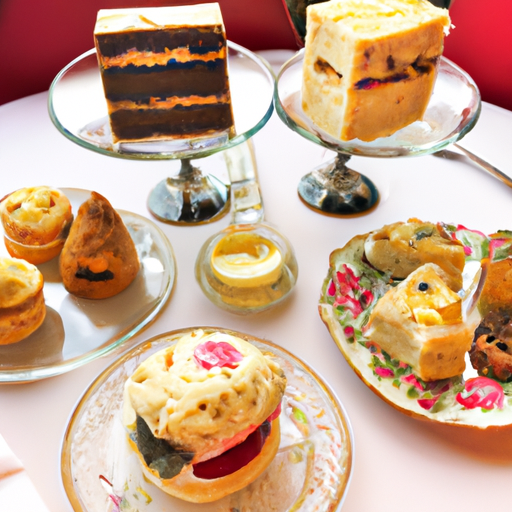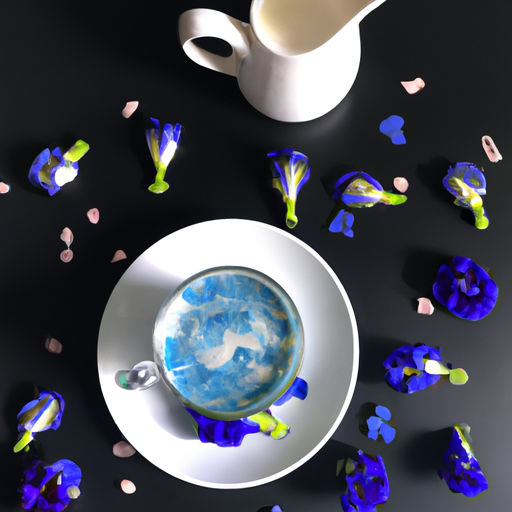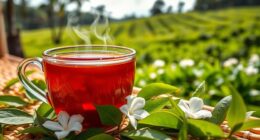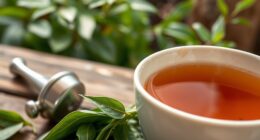Step into the enchanting world of cardamom tea, where taste buds are tantalized and senses are awakened by the Queen of Spices. Like a symphony of flavors, this aromatic beverage dances on the palate, weaving together notes of pungent spice, sweet indulgence, and a touch of peppery warmth.
With its origins deeply rooted in Indian cuisine, cardamom tea reigns supreme, captivating hearts and taste buds around the globe.
But there is more to this regal spice than meets the eye. Not only does cardamom add a delightful twist to dishes, it also offers a plethora of health benefits. Green cardamom may aid in lowering bad cholesterol and soothing the symptoms of irritable bowel syndrome, while black cardamom works its magic on intestinal health.
Join me on a journey of exploration as we delve into the benefits, uses, and preparation of this delightful elixir. From the delicate crush of cardamom pods to the gentle simmering of the brew, we will uncover the secrets of this ancient spice.
So, grab your teapot and let’s embark on a captivating adventure through the delightful world of cardamom tea.
Key Takeaways
- Cardamom tea is known as the ‘Queen of Spices’ and has a strong and distinctive flavor.
- Cardamom tea offers numerous health benefits, including antioxidant, antimicrobial, and anti-inflammatory properties.
- Green cardamom may help lower bad cholesterol and relieve symptoms of irritable bowel syndrome, while black cardamom improves intestinal health.
- Cardamom tea aids digestion, lowers bad cholesterol levels, strengthens the immune system, and can be enjoyed in various traditional recipes or added to favorite teas and dishes.
What is it?
Cardamom tea is a flavorful and aromatic beverage that’s made by boiling crushed cardamom pods in water. It’s often enjoyed for its unique taste and potential health benefits. Known as the ‘Queen of Spices,’ cardamom has a strong and distinctive flavor that’s pungent, spicy, sweet, peppery, and even floral and refreshing. This spice holds great cultural significance, especially in Indian cuisine, where it’s used in both curry and masala chai.
Apart from its delightful taste, cardamom tea also offers numerous health benefits. It’s known for its antioxidant, antimicrobial, and anti-inflammatory properties. Green cardamom, specifically, may help lower bad cholesterol and relieve symptoms of irritable bowel syndrome, while black cardamom has been found to improve intestinal health. However, it’s important to seek professional medical advice before using teas or herbs for medical conditions.
Benefits and Uses
After discovering the myriad of health benefits and versatile uses of this aromatic spice, I couldn’t help but be captivated by the enchanting possibilities of incorporating it into my daily routine.
Cardamom tea isn’t just a delightful beverage, but it also offers a range of health benefits. Here are four reasons why you should consider adding cardamom tea to your daily regimen:
-
Digestive Aid: Cardamom has long been used in traditional medicine to aid digestion and relieve gastrointestinal issues. It can help alleviate symptoms of indigestion, bloating, and gas.
-
Anti-inflammatory Properties: The antioxidants in cardamom tea have anti-inflammatory effects, which can help reduce inflammation in the body and promote overall health.
-
Heart Health: Studies have shown that cardamom may help lower bad cholesterol levels, thus reducing the risk of heart disease.
-
Immune Boost: Cardamom tea is packed with antioxidants and antimicrobial properties, which can strengthen your immune system and protect against infections.
To enjoy these health benefits, you can try traditional cardamom tea recipes or experiment with adding cardamom to your favorite teas or dishes. Embrace the queen of spices and savor the delightful world of cardamom tea.
Preparation and Brewing
First, I gather all the necessary ingredients and equipment for preparing and brewing a delicious cup of cardamom tea. I make sure to have fresh cardamom pods, a mortar and pestle for crushing them, water, and a pot for boiling.
There are two types of cardamom that can be used – green and black. For a traditional cardamom tea, I prefer using green cardamom as it blends well with other spices like ginger and cinnamon.
To make the tea, I crush a few pods of cardamom and add them to boiling water. I let it simmer for about 15 minutes to infuse the flavors.
There are also various cardamom tea recipes and variations available, such as adding milk or honey for a creamy and sweet taste. The possibilities are endless when it comes to exploring the delightful world of cardamom tea.
Frequently Asked Questions
What are some common side effects or allergic reactions to cardamom tea?
I once had a friend who experienced an upset stomach after drinking cardamom tea, which is a common side effect. However, cardamom tea is known for its benefits in aiding digestion, relieving gas, and soothing the stomach.
Can cardamom tea be consumed during pregnancy or breastfeeding?
During pregnancy, cardamom tea can benefit digestive health by relieving symptoms of irritable bowel syndrome. For breastfeeding, adding cardamom tea to your diet can provide both flavor and health benefits.
Are there any specific dosage recommendations for cardamom tea?
Dosage recommendations for cardamom tea vary depending on individual needs and preferences. However, it is generally safe to consume 1-2 cups per day. Cardamom tea offers numerous health benefits, including antioxidant properties and potential cholesterol-lowering effects.
Can cardamom tea interact with any medications or medical conditions?
Cardamom tea may interact with certain medications and pose potential medical risks. It is important to consult with a healthcare professional before consuming cardamom tea, especially if you have any existing medical conditions or are taking medications.
Are there any specific storage instructions for cardamom tea to maintain its freshness and flavor?
To maintain the freshness and flavor of cardamom tea, store it in an airtight container in a cool, dark place away from moisture and heat. Follow best brewing practices by using fresh cardamom pods and boiling them in water for 15 minutes.
Conclusion
In conclusion, cardamom tea is truly a tantalizing and therapeutic treat. With its unique flavor and fragrance, this Queen of Spices reigns supreme in the world of beverages.
Sip on this soothing elixir to savor its pungent, peppery, and sweet allure. Not only does cardamom tea tantalize the taste buds, but it also offers a plethora of health benefits.
So why wait? Brew a cup of this delightful drink, and let the Queen of Spices enchant your senses with its captivating charm.










